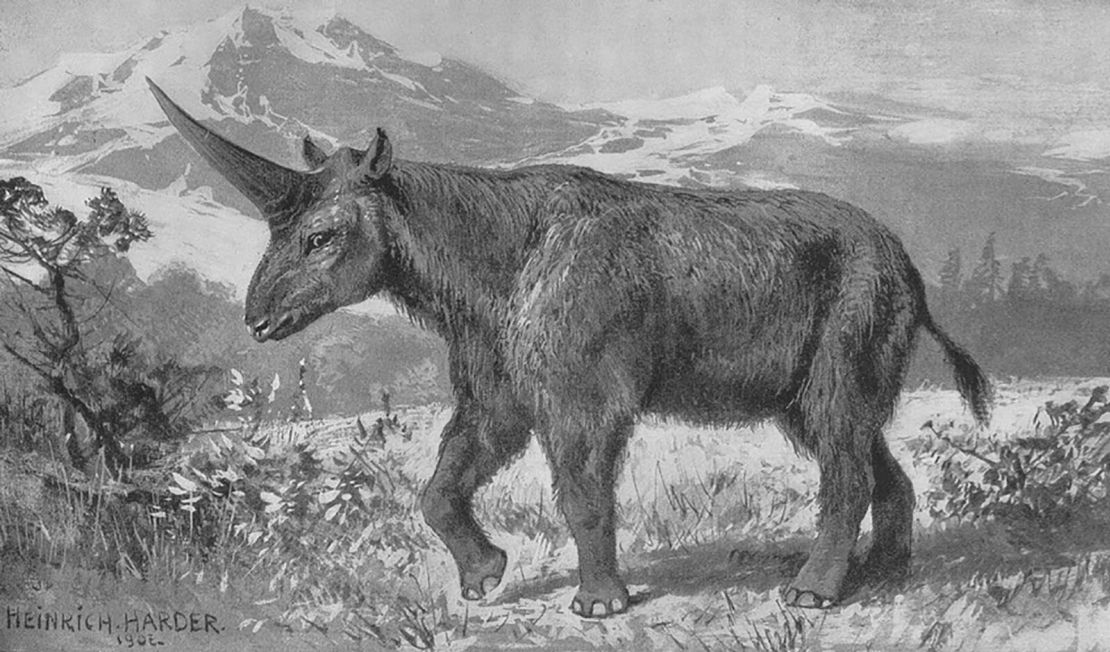Siberian unicorn’ once roamed among humans, surviving in Eastern Europe and western Asia until at least 39,000 years ago, around the same time of Neanderthals and early modern humans.

An extinct giant rhinoceros, sometimes described as a “Siberian unicorn,” lived on the planet much longer than scientists previously thought, new research shows.
A study published Monday in the journal Nature Ecology & Evolution says that the shaggy creature once roamed among humans, surviving in Eastern Europe and western Asia until at least 39,000 years ago, around the same time of Neanderthals and early modern humans.
The report’s authors have not responded to a request for comment.
The latest findings used radiocarbon dating and genetic analysis on 23 specimens of the rhinoceros to reveal the life of the mysterious 3.8-ton Elasmotherium sibiricum, which was previously thought to have become extinct about 200,000 years ago.
They suggest that the “Siberian unicorn,” which would have lived in modern-day Russia and had range that extended to areas in Mongolia, northern China and Kazakhstan, went extinct due to environmental changes that affected the sort of grasses and herbs it used to eat, the study’s authors wrote in the Conversation.
The animal, whose horn could be up to a meter long, found it hard to shift away from a grass diet, the authors wrote.
“Relatives such as the woolly rhino had always eaten a more balanced array of plants, and were much less impacted by a change in habitat,” they wrote.
They added that humans were not the cause of its extinction.

“In addition to this, the persistently restricted geographical range of Elasmotherium (also probably linked to its specialized habitat), as well as the low population size and slow reproductive rate associated with its large body size, would have predisposed it to extinction in the face of environmental change,” the authors wrote in the study.
The scientists say the loss of the Siberian unicorn provides a useful case study “displaying the poor resilience of rhinos to environmental change.”






